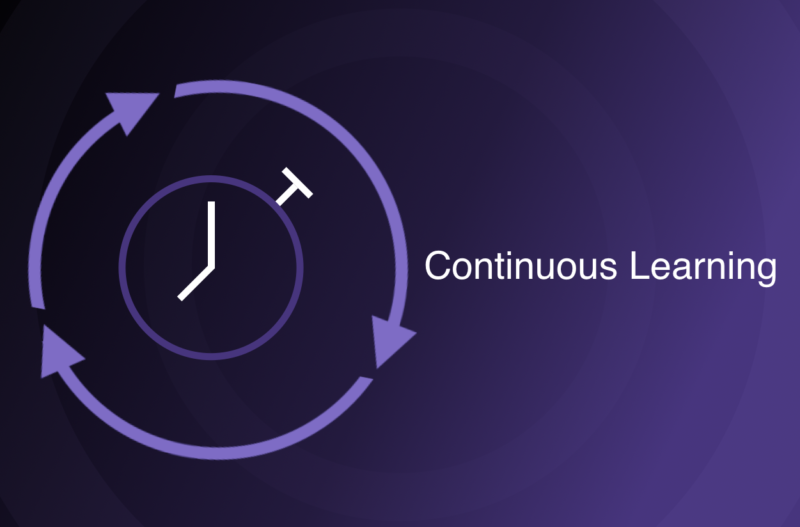
One of the most compelling qualities of machine learning technology is that it can continuously learn based on the latest available information. As the market and inputs to the machine learning system change, the platform will adapt and continue to provide strong performance. This ability to adapt, enables organizations to leverage machine learning for a broad set of automation tasks. Simply turn the machine learning system “on” and you can trust the system to learn and adapt on an ongoing basis.
Often when organizations consider automation they don’t take the approach of building a continuously adapting system. One popular solution for automation is building a set of hard-coded rules. These rules are often too stringent to adapt to changes in the broader environment. This results in the system quickly degrading in performance. Alternately, consider a machine learning system that is not designed to continuously learn. Instead, it is trained once on the available data at the time. A system trained only once can also become stale if the market conditions and inputs change. This again resulting in a degradation in performance. A continuously learning machine learning system, on the other hand, can adapt to a constantly changing global environment impacted by secular changes and black swan events.
Example : Predicting Customer Churn
Let’s take an example. A prominent pain point for most organizations is predicting customer churn. Let’s consider the various algorithm types in the context of customer churn.
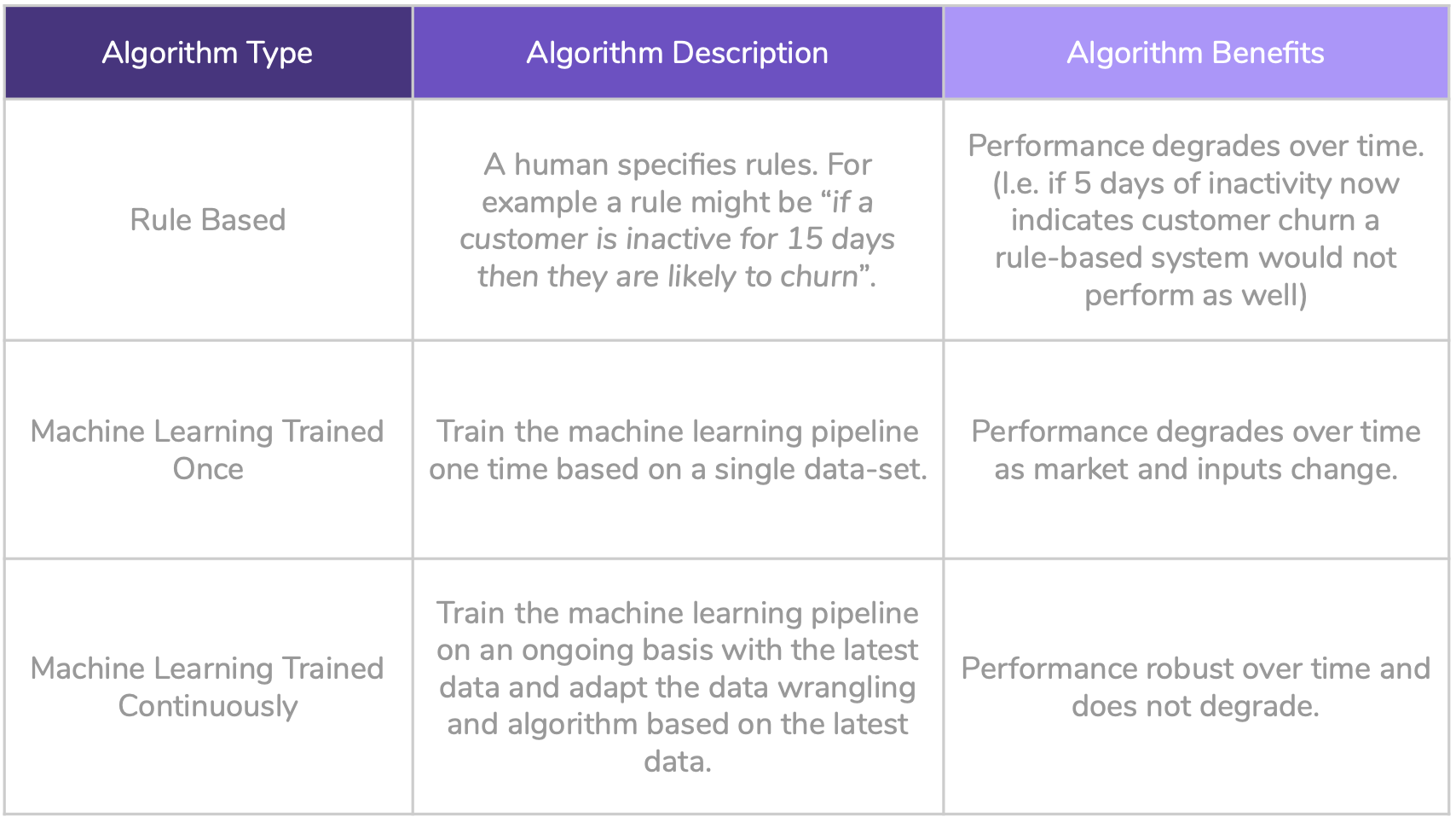 Examples of a Rule-Based Algorithm, Static Machine Learning, and Continuous Machine Learning for Churn Prediction
Examples of a Rule-Based Algorithm, Static Machine Learning, and Continuous Machine Learning for Churn Prediction
Building a Continuously Learning Machine Learning Platform
There are clear benefits to continuous learning in a machine learning system. But it’s not easy to productionize this type of system.
Streaming Data into Machine Learning Models
The first prerequisite for building a continuously learning system is a platform which is capable of ingesting data on an ongoing basis. Following this, it should be capable of incorporating that data directly into the machine learning models. Cortex is a good example of a Machine Learning Platform which is able to ingest continuous streams of new data and update the models based on that data.
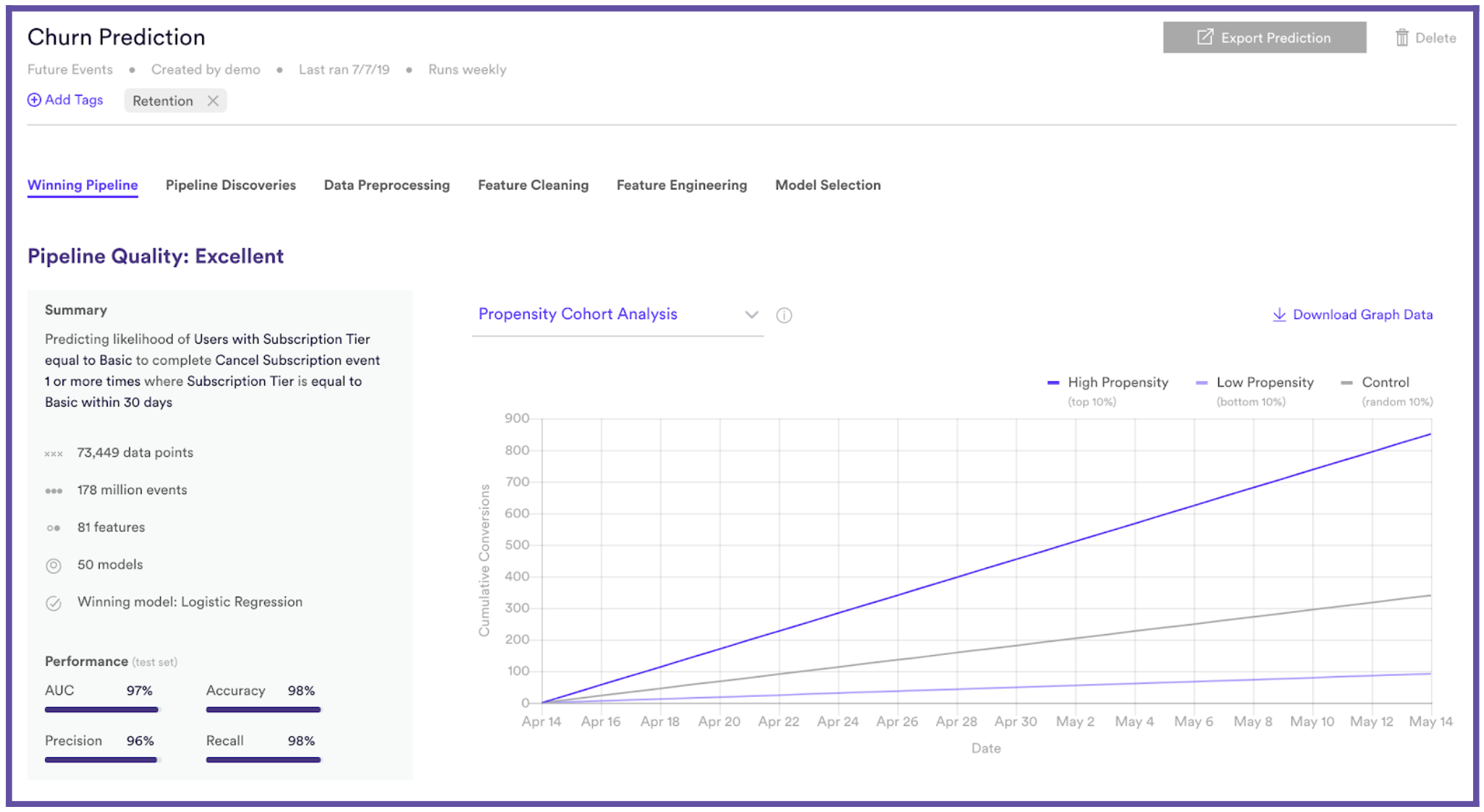 A screenshot of Vidora’s product Cortex which ingests continuous streams of data and continuously adapts machine learning models based on that data.
A screenshot of Vidora’s product Cortex which ingests continuous streams of data and continuously adapts machine learning models based on that data.
The Challenge – Data Wrangling
Machine learning systems typically require various data wrangling steps prior to data being ingested into a model. These wrangling steps include cleaning the data and featurizing the data (learn more about data wrangling here). Unfortunately data wrangling is very time consuming and typically manual process. Data wrangling often takes upwards of 90% of a developer’s time (here’s a video of our CEO discussing the difficulties with data wrangling). The manual nature of data wrangling becomes an issue when we consider a system which is meant to continuously adapt to new data. In such a situation, there is no room for a time-intensive manual process of data wrangling!
Automating Data Wrangling and Model Selection
One of the innovative components of Cortex is its ability to determine the right feature cleaning techniques, features and models to obtain the best performance on the data sent to the platform. By selecting the best techniques, Cortex automates both data wrangling and model selection. As the data nature of the input data changes, so do the features and models the system chooses to use. The inputs to the platform may change, but the performance of the system will not decay.
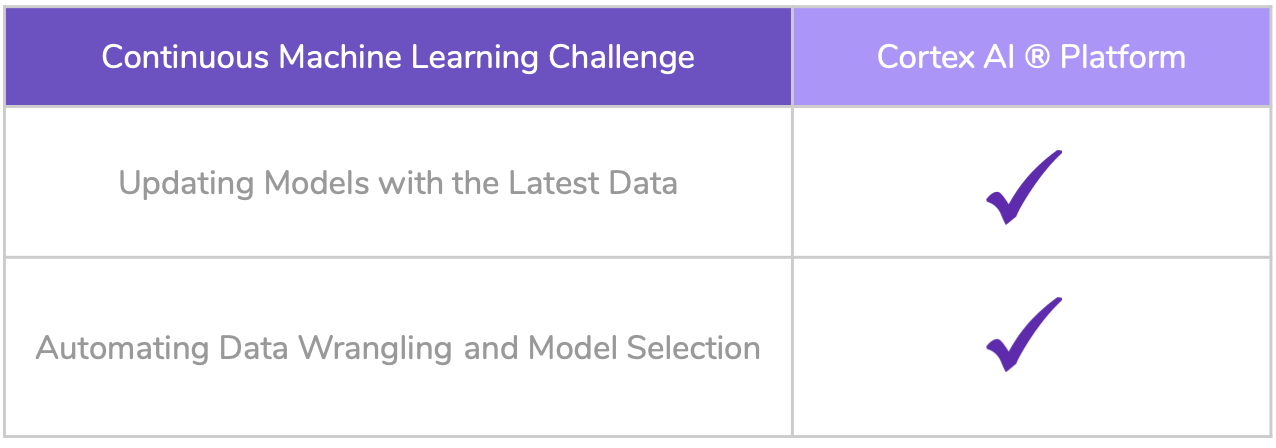
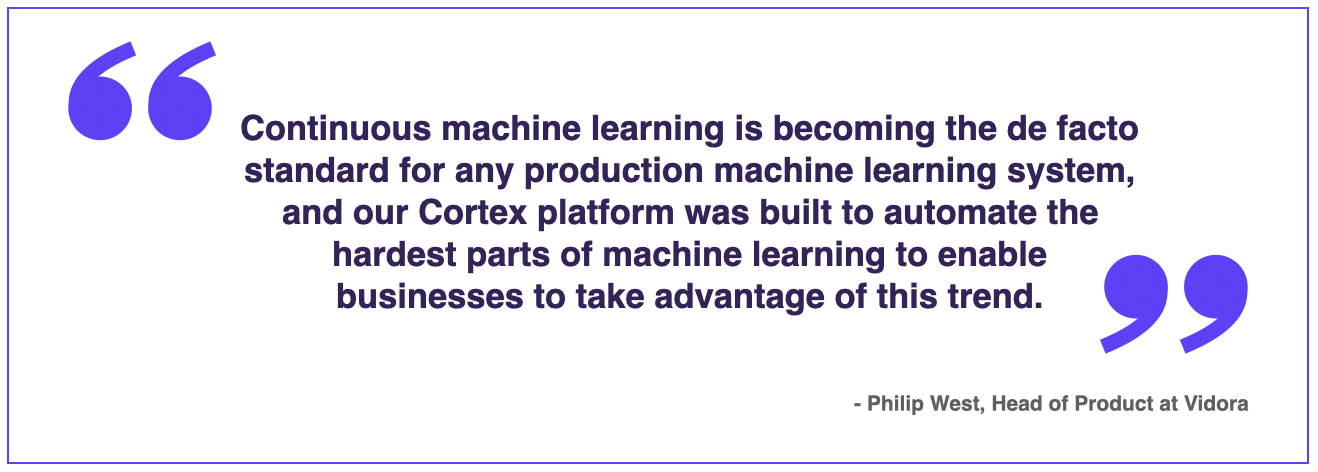
Continuous Learning and Cortex
Continuous machine learning enables organizations to adapt on an ongoing basis to a rapidly changing market. Cortex provides a comprehensive machine learning solution. It not only solves the continuous learning challenge, but also enables everyone in your business, from marketers to business intelligence users, to take advantage of the technology.
Learn More
Interested in learning more? Check out a demo by reaching out to us at info@vidora.com.


